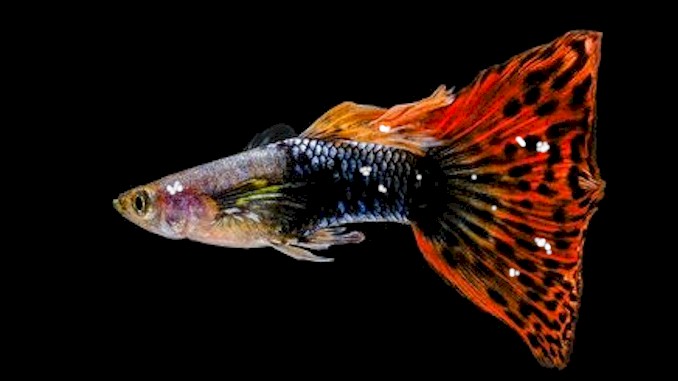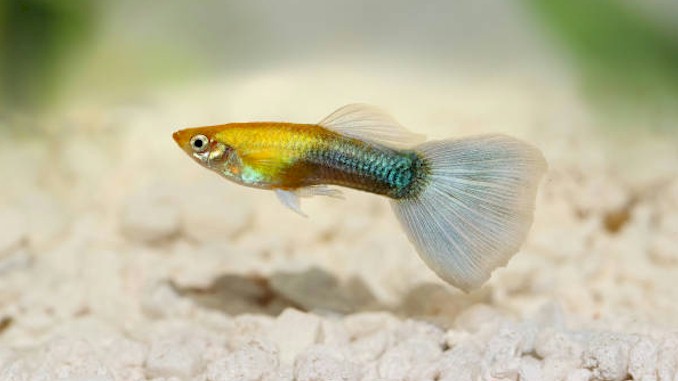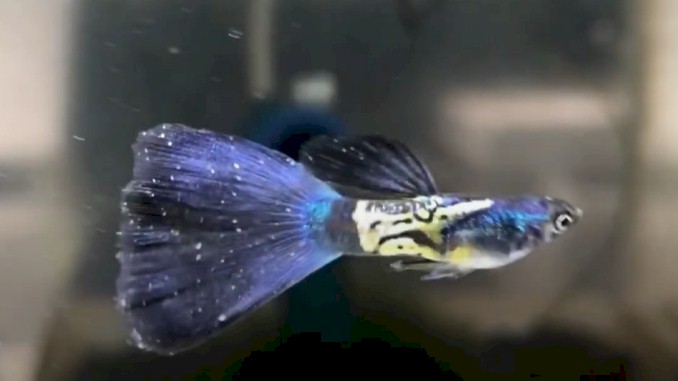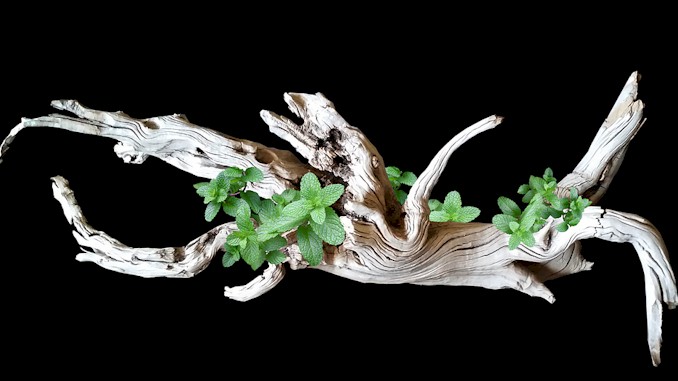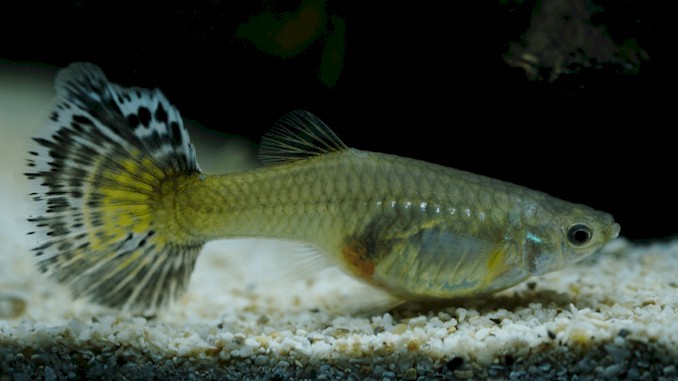Why Is My Guppy Turning White (Reasons and Solutions)
If you are a guppy owner, you may have noticed that your fish is turning white. This can be a sign of stress, disease or poor water quality. You may be wondering what is causing this change and how to fix it. Don’t worry, I’m here to help you. In this article, I will explain why your guppy is turning white and what you can do to treat and prevent it. I have years of experience in keeping and breeding guppies, so I know how to deal with this common problem. Read on to find out the answer.
A guppy may turn white due to various factors, such as stress, parasites, fungal infections, bacterial diseases or genetic disorders. The loss of color is usually accompanied by other symptoms, such as lethargy, loss of appetite, clamped fins or erratic swimming. The treatment and prevention of this condition depend on the underlying cause and the general health of the fish.
As you can see, there are many possible reasons why your guppy is turning white. It is important to act quickly and correctly to save your fish and prevent further complications. In the following sections, I will go into more detail about each cause and how to treat it effectively. I will also share some tips on how to prevent this problem from happening again. By the end of this blog post, you will have a better understanding of your guppy’s health and how to care for it properly.
Why is My Guppy Turning White? The Main Causes and Symptoms
One of the most attractive features of guppies is their vibrant colors. However, sometimes these colors may fade or disappear, leaving your guppies looking pale or white. This can be a sign of a serious health problem that needs your attention.
There are many possible causes for your guppy’s color loss, ranging from stress to disease. In this section, I will explain some of the most common ones and how to recognize them by their symptoms. Knowing what is wrong with your guppy is the first step to finding a solution.
Fin and Tail Rot

This is a bacterial infection that affects the fins and tail of your guppy. It can also be caused by fungal growth or ammonia poisoning. The main symptom is a whitish or yellowish discoloration of the fins and tail, which may also become ragged or fall off. Your guppy may also lose its appetite and become lethargic.
Ich Disease

This is an ectoparasite that attaches to your guppy’s body and causes white spots all over it. It also makes your guppy itch and scratch against objects in the tank. Other symptoms include clamped fins, rapid breathing, loss of appetite and weight loss.
Mold Development
This is a fungal infection that can occur in poorly maintained tanks with low oxygen levels and high organic matter. It can turn your guppy white by covering its body with a cotton-like substance. Your guppy may also have difficulty breathing, swimming and eating.
Dropsy Disease

This is a bacterial infection that affects the internal organs of your guppy. It causes fluid retention and swelling in the abdomen, making your guppy look bloated. Your guppy may also have raised scales, protruding eyes, pale skin and white feces.
Hexamitiasis (Hole in the Head)

This is a protozoan infection that affects the digestive system of your guppy. It causes lesions on the head and body of your guppy, which may appear as holes or pits. Your guppy may also have white stringy feces, loss of appetite, weight loss and lethargy.
These are some of the most common reasons why your guppy may turn white. However, there are other factors that can affect your guppy’s coloration as well, such as genetics, age, diet and stress. Therefore, it is important to observe your guppy closely and look for any changes in its behavior or appearance.
How to Treat a White Guppy Depending on the Cause
If you have identified the cause of your guppy’s color loss, you can take appropriate steps to treat it and restore your guppy’s health and beauty. Different causes require different treatments, so make sure you follow the instructions carefully. Here are some common treatments for white guppies:
Fin and Tail Rot
The first step is to improve the water quality by performing regular water changes and removing any debris or waste from the tank. You can also add aquarium salt (1 teaspoon per gallon) to help prevent infection. Next, you can use an antibacterial or antifungal medication that is safe for guppies, such as Melafix, Pimafix or Furan-22. Follow the dosage and duration instructions on the label. You may need to isolate your infected guppy in a quarantine tank during treatment.
Ich Disease
The first step is to raise the water temperature gradually to 86°F (30°C) for about a week. This will speed up the life cycle of the parasite and make it more vulnerable to treatment. Next, you can use an anti-parasitic medication that is safe for guppies, such as Malachite Green, Methylene Blue or Rid-Ich Plus. Follow the dosage and duration instructions on the label. You may need to treat the whole tank as Ich can spread quickly among fish.
Mold Development
The first step is to improve the water quality by performing regular water changes and adding an air pump or filter to increase oxygen levels. You can also add aquarium salt (1 teaspoon per gallon) to help prevent fungal growth. Next, you can use an antifungal medication that is safe for guppies, such as Pimafix, Jungle Fungus Clear or API Fungus Cure. Follow the dosage and duration instructions on the label. You may need to isolate your infected guppy in a quarantine tank during treatment.
Dropsy Disease
The first step is to improve the water quality by performing regular water changes and reducing stress factors such as overcrowding or aggression. You can also add aquarium salt (1 teaspoon per gallon) to help reduce fluid retention. Next, you can use an antibiotic medication that is safe for guppies, such as Kanaplex, Maracyn 2 or Tetracycline. Follow the dosage and duration instructions on the label. You may need to isolate your infected guppy in a quarantine tank during treatment.
Hexamitiasis (Hole in the Head)
The first step is to improve the water quality by performing regular water changes and adding activated carbon or peat moss to lower pH levels. You can also add aquarium salt (1 teaspoon per gallon) to help prevent infection. Next, you can use an anti-protozoan medication that is safe for guppies, such as Metronidazole, Hex-A-Mit or General Cure. Follow the dosage and duration instructions on the label. You may need to isolate your infected guppy in a quarantine tank during treatment.
These are some of the most effective treatments for white guppies depending on their cause. However, always consult with a veterinarian before using any medication on your fish. Also, monitor your guppy’s condition closely and look for any signs of improvement or worsening.

Seachem ParaGuard
A bit pricey, but worth it!
How to Prevent Your Guppy from Turning White in the Future
Treating your white guppy is only half of the solution. You also need to prevent it from happening again by taking good care of your guppy and its environment. Here are some tips on how to prevent your guppy from turning white in the future:
Stick to the Right Water Parameters
This has to be your primary concern. Guppies need clean and stable water conditions to thrive and maintain their colors. Test your water regularly for pH, ammonia, nitrite, nitrate, hardness and temperature. Use a reliable test kit or strips and follow the instructions carefully. Aim for these ideal parameters for guppies:
pH: 6.8-7.8
Ammonia: 0 ppm
Nitrite: 0 ppm
Nitrate: <20 ppm
Hardness: 10-30 dGH
Temperature: 75-80°F (24-27°C)
If you notice any fluctuations or deviations from these ranges, take immediate action to correct them. Use water conditioners, buffers, filters, heaters or coolers as needed. Perform regular water changes (10-20% weekly) to keep the water fresh and remove any waste or toxins.
Feed Your Guppies Adequately
Make sure that you feed your guppy fish well. Guppies need a balanced diet of high-quality flakes or pellets that contain protein, carbohydrates, vitamins and minerals. You can also supplement their diet with live or frozen foods such as brine shrimp, bloodworms, daphnia or tubifex worms. These foods will enhance their color and health.
Avoid overfeeding your guppies as this can cause digestive problems and pollute the water. Feed them only what they can eat in a few minutes and remove any uneaten food after each feeding.
Vary their diet by offering different types of foods every day. This will prevent boredom and nutritional deficiencies.
Maintain Hygiene
Keep a pristine tank by cleaning it regularly and removing any debris or algae that may accumulate on the substrate, plants or decorations. Use a gravel vacuum or siphon to suck out any dirt or waste from the bottom of the tank. Scrub off any algae with a brush or scraper. Rinse any artificial plants or ornaments with clean water before putting them back in the tank.
Avoid using soap or detergents as they can leave harmful residues that can harm your guppies. Replace any filter media that is clogged or worn out with new ones every month or so.
Quarantine Sick Fish
If you have one guppy that has already turned white, take it out of the tank and place it in a separate quarantine tank for treatment. This will prevent the disease from spreading to other fish and allow you to monitor its condition closely. Use a similar water quality and temperature as the main tank for the quarantine tank.
Do not add any new fish to your main tank without quarantining them first for at least two weeks. This will ensure that they are healthy and free of any diseases that could infect your existing fish.
Provide Enough Space and Plants
Guppies are social and active fish that need enough space to swim and explore. They also need plants to provide them with shelter, hiding places and oxygen. A crowded or bare tank can stress your guppies and make them lose their color.
The general rule of thumb is to provide one gallon of water per inch of fish. However, this may vary depending on the shape and filtration of your tank. A longer and wider tank is better than a taller and narrower one.
Choose live or artificial plants that are suitable for guppies, such as java fern, hornwort, anubias or amazon sword. Avoid plants that are too sharp or rough as they can damage your guppies’ fins.
Arrange the plants in a way that creates some open spaces for swimming and some dense areas for hiding. You can also add some driftwood, rocks or caves to create more interest and diversity in your tank.
Avoid Aggressive Tank Mates
Guppies are peaceful fish that get along well with most other community fish. However, some fish can be aggressive or predatory towards guppies, especially those with long and colorful fins. These fish can nip, chase or eat your guppies, causing them stress and injury.
Choose tank mates that are similar in size and temperament to guppies, such as platies, mollies, tetras or rasboras. Avoid fish that are too large or too small for guppies, such as angelfish, cichlids or neon tetras.
Also avoid fish that are known fin-nippers, such as barbs, danios or tiger sharks. Even some guppies can be nippy towards each other if they are not kept in a proper ratio of males to females (one male per two to three females).
Enhance Their Color Naturally
Guppies have natural pigments in their skin cells that reflect light and produce their beautiful colors. You can enhance these pigments by providing them with optimal lighting and nutrition.
Use a full-spectrum light that mimics natural sunlight and brings out the best colors in your guppies. Avoid using colored lights that may distort their appearance or cause stress.
Feed your guppies foods that contain natural color enhancers such as carotenoids (found in carrots), spirulina (a type of algae), astaxanthin (found in shrimp) or beta-carotene (found in paprika). These substances will boost the reds and oranges in your guppies’ skin cells. You can also feed them foods that contain krill oil or cod liver oil to enhance the blues and greens.
Reduce Stress Factors
Guppies are sensitive to stress and may lose their color if they feel threatened or uncomfortable. Stress can also lower their immune system and make them more susceptible to diseases. You can reduce stress factors by providing them with a suitable environment and socialization.
Make sure your tank has enough hiding places and decorations to make your guppies feel secure and relaxed. You can use plants, rocks, driftwood or caves to create a natural-looking habitat.
Avoid sudden changes in water temperature, pH or hardness as these can shock your guppies and cause stress. Acclimate them slowly to any new water conditions or treatments.
Keep your guppies in a group of at least five individuals of the same species. Guppies are social fish that need companionship and interaction. However, avoid overcrowding your tank as this can also cause stress and aggression.
Choose a quiet and peaceful location for your tank away from direct sunlight, loud noises or vibrations. These can disturb your guppies and make them nervous or scared.
That’s it, these are some ways to prevent your guppy from turning white in the future by taking good care of its health and happiness. Remember that prevention is always better than cure when it comes to keeping your guppy colorful and beautiful.
Conclusion: How to Keep Your Guppy Healthy and Colorful
Guppies are one of the world’s most popular and colorful aquarium fish. They are easy to care for and breed, but they can also suffer from various problems that can make them lose their color and turn white. This can be a sign of stress, disease, or poor water quality.
In this article, I have explained why your guppy may turn white and what you can do to treat and prevent it. I have also shared some tips on how to enhance your guppy’s color naturally and keep it healthy and happy. By following these steps, you can enjoy the beauty and charm of your guppy for a long time.
I hope you found this article helpful and informative. If you have any questions or comments, please feel free to leave them below. I would love to hear from you and learn from your experience. Thank you for reading, and happy fishkeeping!

